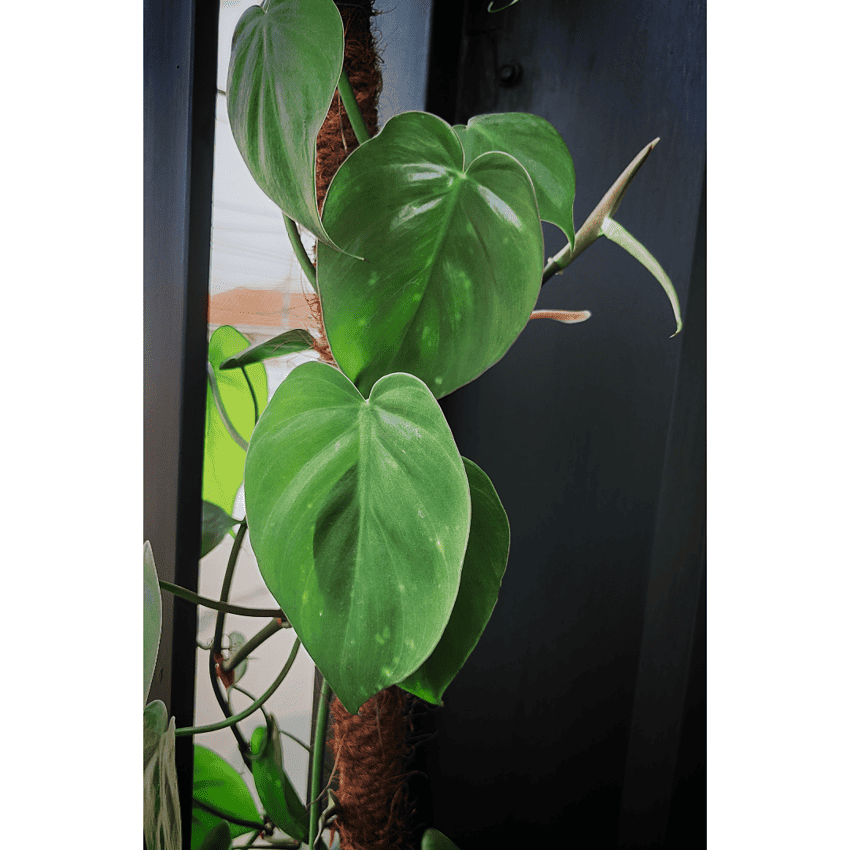Philodendron rugosum is a tropical plant that is well-known for its unique and textured foliage. It is an evergreen plant that is native to Ecuador and is a popular choice among houseplant collectors due to its adaptability, forgiving nature, and relatively low-maintenance requirements.
The Philodendron rugosum is also known as the Pigskin Philodendron, Naugahyde Philodendron, or Sow’s Ear Plant. Its popularity has helped preserve the species for future generations, despite its near-threatened status due to habitat loss. This plant is an excellent choice for beginners, as it is easy to care for and can handle lower light conditions, making it a popular choice for bathrooms.
If you are looking to add a unique and interesting plant to your collection, the Philodendron rugosum is an excellent choice. Its large, leathery leaves and adaptability make it a low-maintenance option that is perfect for those new to caring for tropical plants. With the right care and attention, this plant can thrive both indoors and outdoors, providing a beautiful addition to any space.
Overview
Philodendron rugosum is a popular houseplant among plant enthusiasts due to its unique and attractive foliage. This tropical plant is native to Ecuador and belongs to the Araceae family. In this section, we will provide you with a brief overview, including its description, species, and care.
Description
Philodendron rugosum is a plant with large, deep green leaves that can grow up to 35 cm long. The leaves have a leathery texture and are uniquely textured, giving the plant a lush, exotic look. The plant’s leaves are its selling point, creating a visual spectacle that’s hard to miss. The leaves crinkle and wrinkle when they meet the plant’s thick stem, too, really driving home the illusion of a giant ear.
Species
Philodendron rugosum is an evergreen tropical plant endemic to Ecuador. It was first described in 1983, and nowadays, it has a near-threatened status due to habitat loss. Luckily, its popularity with houseplants collectors means that this species has a chance at being preserved for future generations.
Care
Philodendron rugosum is an adaptable, forgiving, and relatively low-maintenance plant. It is an excellent beginner houseplant and can handle lower light conditions, making it a popular bathroom plant. Here are some care tips:
- Light: It prefers bright, indirect light but can also tolerate low-light conditions.
- Water: Water the plant when the top inch of soil is dry. Overwatering can cause root rot, so letting the soil dry out between watering is essential.
- Humidity: Philodendron rugosum prefers high humidity levels. You can increase humidity by misting the plant or placing a humidifier nearby.
- Fertilizer: Fertilize the plant once a month during the growing season with a balanced fertilizer.
- Soil: Philodendron rugosum prefers well-draining soil with high organic matter content.
That’s it for our overview of Philodendron rugosum. In the following sections, we will provide more detailed information on each aspect of the plant’s description, species, and care.
Frequently Asked Questions
What is the ideal temperature for Philodendron rugosum?
Philodendron rugosum thrives in temperatures ranging from 65°F to 85°F (18°C to 29°C). It’s important to keep the plant away from cold drafts, as it can damage the leaves.
How much light does Philodendron rugosum need?
Philodendron rugosum prefers bright, indirect light. It can tolerate low light conditions, but it may not grow as quickly or produce as many leaves. Avoid direct sunlight, as it can scorch the leaves.
What type of soil is best for Philodendron rugosum?
Philodendron rugosum prefers well-draining soil that is rich in organic matter. A good potting mix for this plant should consist of peat moss, perlite, and vermiculite. It’s important to ensure that the soil is not waterlogged, as this can lead to root rot.
How often should you fertilize Philodendron rugosum?
Philodendron rugosum should be fertilized once a month during the growing season (spring and summer). Use a balanced fertilizer with an NPK ratio of 10-10-10 or 20-20-20. It’s important not to over-fertilize, as this can burn the roots.
Can Philodendron rugosum be propagated?
Yes, it can be propagated through stem cuttings. Take a stem cutting with a few leaves and aerial roots, and place it in a jar of water or a pot with moist soil. Keep the cutting in a warm, bright spot and wait for roots to form before transplanting.
What pests commonly affect Philodendron rugosum?
Philodendron rugosum can be affected by pests such as spider mites, mealybugs, and scale insects. Regularly inspect the plant for any signs of infestation, such as webbing or sticky residue. If pests are present, treat the plant with an insecticidal soap or neem oil.


